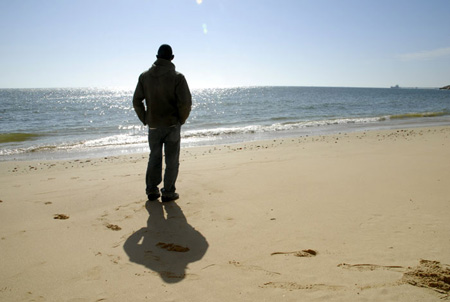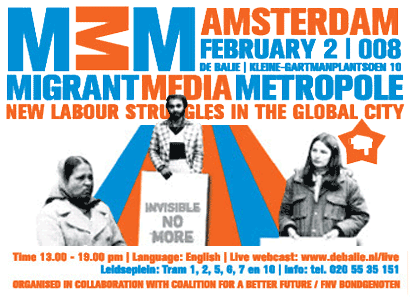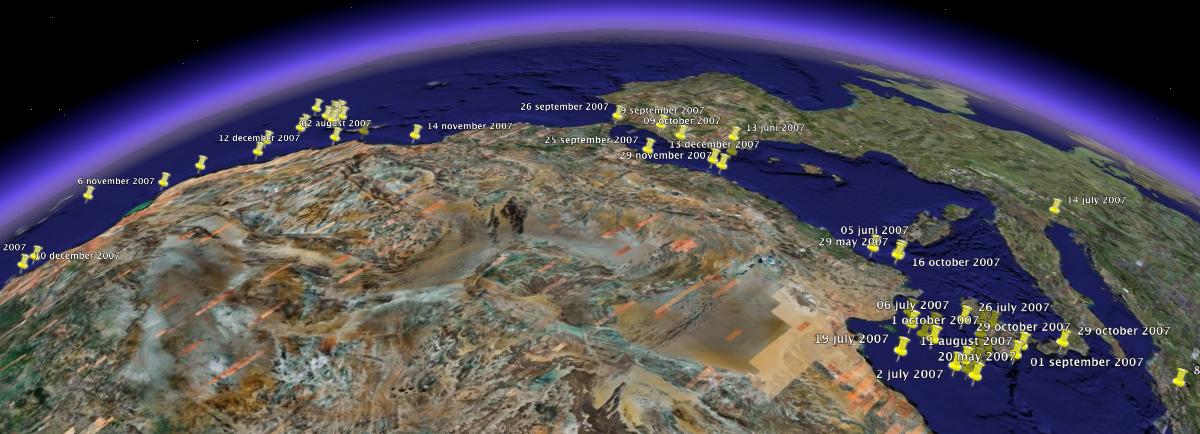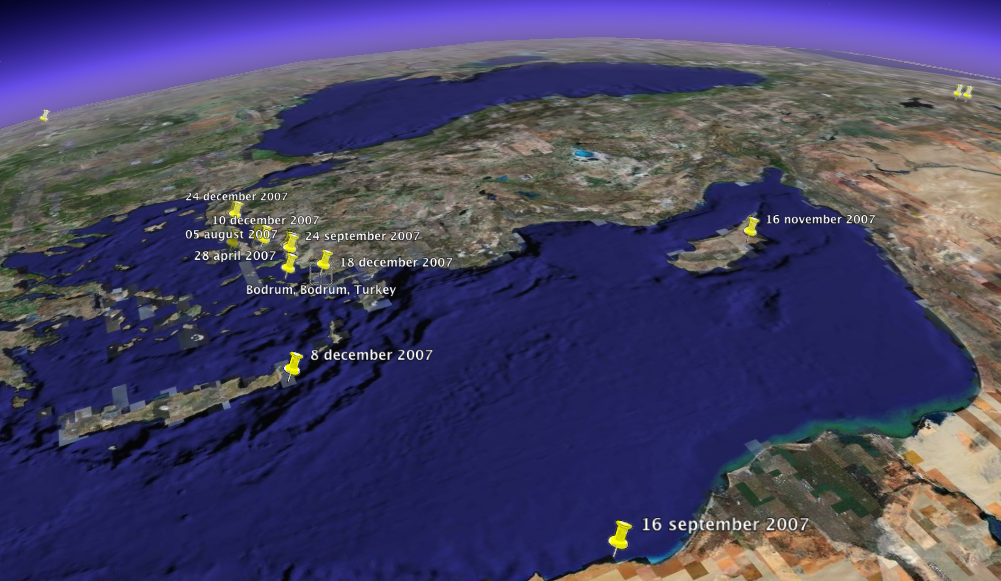Just finished reading a fairly intresting reserach paper by Hein de Haas of the International Migration Institute in Oxford that deals with the ‘The myth of invasion – Irregular migration from West Africa to the Maghreb and the European Union‘. In the paper de Haas attempts to show that immigration to Europe by western African migrants crossing the Mediteranian or Atlantic is fairly small both when compared to migration of western africans to North African Countries and compared to other ways of gaining access to the EU (mostly by overstaying visa).
While this is probably a fairly realistic conclusion when it comes to the relative numbers, his estimations concerening the absolute numbers (25.000 successful crossings per year) are fairly unconvincing: there is almost no reliable empirical data on undocumented border crossings available and that does not get much better by ‘triangulating’ a bunch of unreliable data sources. Still the paper makes a fine antidote to ramblings about hordes of african would-be terrorist immigrants who are waiting in Africa planning organized assaults on our coasts.
For those to lazy to read the 83 page paper, here are two extracts from the conclusion:
This study showed that apocalyptic representations of a massive exodus of desperate Africans who are pushed out of the continent by poverty, war and drought are fundamentally flawed. The popular perception that irregular migration from Africa is growing at an alarming rate is deceptive. Since the introduction of visa requirements for North African countries by Italy and Spain in the early 1990s, illegal crossings of the Mediterranean Sea have been a persistent phenomenon. Rather than an increase per se, the major change has been that, after 2000, sub-Saharan Africans started to join and have now overtaken North Africans as the largest category of irregular boat migrants. Although almost all West African countries are represented in these flows, most migrants tend to come from a relatively small number of countries, in particular Senegal, Mali, Ghana and Nigeria. It is a myth that all West African migrants crossing the Sahara to North Africa are ‘in transit’ to Europe. There are probably still more sub-Saharan Africans living in North Africa than in Europe. Libya in particular is an important destination country in its own right, in particular for Chadians, Nigeriens and Sudanese. Other North African countries house smaller but growing West and Central African communities. […]
The common portrayal of irregular African migrants as “desperate” and impoverished victims of “unscrupulous” traffickers and “merciless” criminal-run smuggling networks is inconsistent with empirical evidence that the vast majority of migrants move on their own initiative. Migration is generally a conscious choice and often a family investment rather than a desperate move. Migrants are generally not among the poorest and least educated of their origin communities. Smugglers are usually not part of international organised crime, but tend to be locally based and operate alone or in relatively small, flexible networks. Migrants travel in stages and typically pay smugglers for one difficult leg of the journey.
Bonus: the cover of page of the study shows a photo of a fragment from a painting hanging in a restaurant in Dakar showing a number of wooden Cayucos which are commonly used for the voyage to the Canary Islands. One of the boats is named ‘Barsaa ou barsaqq’, which according to de Haas means ‘Barcelona or hell’ (according to this earlier story in the Guardian it translates to ‘Barcelona or afterlife’, but given that Egypt’s top religious advisor has just issued a fatwathat muslims who die attempting to reach Europe can not be considered to be martyrs, hell might indeed be a more precise location (at least when it comes to muslims)).
See also this video for more Barsaa/Barsaqq statements (and somebody needs to tell de Haas that the boats are called Cayucos and not Pirogues).




 Deadly incidents in the western mediterranean/atlantic in 2007
Deadly incidents in the western mediterranean/atlantic in 2007 Deadly incidents in the Eastern mediterranean in 2007
Deadly incidents in the Eastern mediterranean in 2007